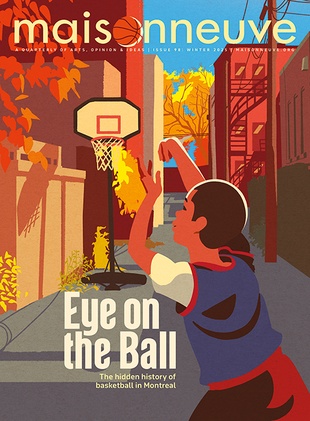The Summer 2024 Music Room
Cadence Weapon: Rollercoaster
Rollercoaster, the new LP from Polaris Prize-winner Cadence Weapon—real name Rollie Pemberton—is a heated, glitchy takedown of techno-utopianism. Blending industrial electronica with hyperpop and rap, Pemberton identifies and lambasts the ways data mining and financial speculation have made it infinitely worse to be (very) online, especially as an artist.
“Monetize my life / colonize my site,” Pemberton raps on the hard-hitting “Press Eject” atop synthetic beeps and skittering percussion. A deeply online artist who has written about and released music on the internet for nearly twenty years, Pemberton understands how tech platforms endlessly seek to extract value from artists and users alike. He also knows that this is not a problem that’s just confined to the internet: “incubator / innovator / downtown renovator,” he riffs on “My Computer,” drawing parallels with exploitative entrepreneurs and landlords.
Synth-pop artist and fellow Torontonian Austra adds a soft touch to the bubbly “Alarms,” which finds Pemberton more introspective, reflecting on the anxiety that can come with online interactions. On album closer “tl;dr” the electronics slip away, replaced by melancholic piano over three minutes of stream-of-consciousness rapping that touches on everything from livestreamed funerals to racist DMs. Rollercoaster is an agitated, energized journey through the mess of online existence—as it cools down, you’ll be thankful for the ride.
Laraw: Quarter Life Crisis
On Quarter Life Crisis, Montrealer Laraw splits the difference between dream pop and Top 40 with mostly effective results. True to its title, the album’s ten songs pair the narrator’s experiences of youthful chaos with the common mid-twenties feeling that you should maybe be a little more grown-up by now.
Laraw is a strong pop songwriter, penning cleverly quotable couplets about desire and angst. “It could be worse / yeah, we could be dating,” she sings on “Poster,” about an ex who brings a new date to one of her shows. “Standby Baby” is a breakup anthem worthy of belting through tears, while “Teach Me How To Love” has a gentle hook that belies its catchiness.
Even when the melodies aren’t as strong—like with the title track, which is a little too laid-back, lacking staying power—the album’s moody atmosphere helps it stand out from other pop-rock efforts. “Kiss Me on the Floor” is swathed in layers of washed-out, warbling textures; “September” gets its energy from crunchy percussion and fuzzy guitars. The juxtaposition of wistful atmospherics and Laraw’s confident vocals makes Quarter Life Crisis an endearing dispatch from your potential new favourite messy twenty-something.
Blunt Chunks: The Butterfly Myth
The Butterfly Myth opens with an anti-climatic revelation. “It pains me but I should be honest / I don’t do much anymore,” Caitlin Woelfe-O’Brien, the songwriter behind the alt-folk project Blunt Chunks, sings in a gentle falsetto. The whole record is suffused with the lethargy and direct vulnerability of these opening lines: through welcome honesty and tasteful arrangements, the album explores a dull sense of loss, like the kind that follows intense heartbreak.
Though there’s sadness here, there’s also peace, or at least a sort of acceptance. Emotional subject matter is given life through tranquil instrumentation and matter-of-fact lyrics. “High Hopes” describes an anxious romance with languid guitars and soulful backing vocals. “Every Day” begins with ethereal harmonies, before Woelfe-O’Brien tells us: “everyone is breaking up / something about the weather.” The calm sometimes cracks, as at the harsh end of “Limbo,” when Woelfe-O’Brien switches into her chest voice to tell the listener, “I don’t wanna do this anymore.” But The Butterfly Myth is a soothing, even uplifting record. “I’m desperate to be calm / desperate to feel well,” Woelfe-O’Brien sings over a lone synth at the start of album closer “Can’t Be The End.” She’s soon bolstered by layers of harmonies as the song develops toward a gospel outro, the narrator becoming one voice amongst many, her pain subsumed into a shared beauty.
Bilal Nasser: How Can We Say Nothing
“The future has disappeared,” a recorded voice tells the listener during the first track of Palestinian-Canadian guitarist and songwriter Bilal Nasser’s How Can We Say Nothing. It’s a powerful statement for an album that was not originally intended to be explicitly political, as Nasser explains on Bandcamp. Now, in the face of Israel’s genocidal attacks on Palestinians, he hopes the record’s explorations of family and nostalgia will “offer solace and continue to foster advocacy” for his people. The cover art is a photo of his grandparents, who survived the 1948 Nakba, in which approximately 750,000 Palestinians were forced from their land after the UN partition of Palestine.
How Can We Say Nothing is a gorgeous and inventive work of classical guitar composition. Nasser is technically impressive and harmonically adventurous, bringing in field recordings, synthesizers and heavy shoegaze-esque textures to develop his sonic world. The album sounds both spontaneous and deeply practiced, with compositions that rarely rest in one mood, veering between elegiac and distressed. On “Cicadas,” Nasser plucks serene chords that hang before building in intensity, joined by actual recordings of the trilling bugs. “…So That Flies Drop Dead Mid-Air” features hypnotic synths and delicate strings, as Nasser’s impressionistic lyrics seem to describe the worlds we inherit from those who come before us: “I am present in your absence,” he sings.
“Barely Here” finds Nasser’s vocals recorded to sound distant, as he grapples with the failures of language. “I’m scared saying it out loud won’t make it go away,” he sings, before building to a scream while aggressively strumming a dissonant chord. How Can We Say Nothing acknowledges the limits of speech, even as it refuses silence.





